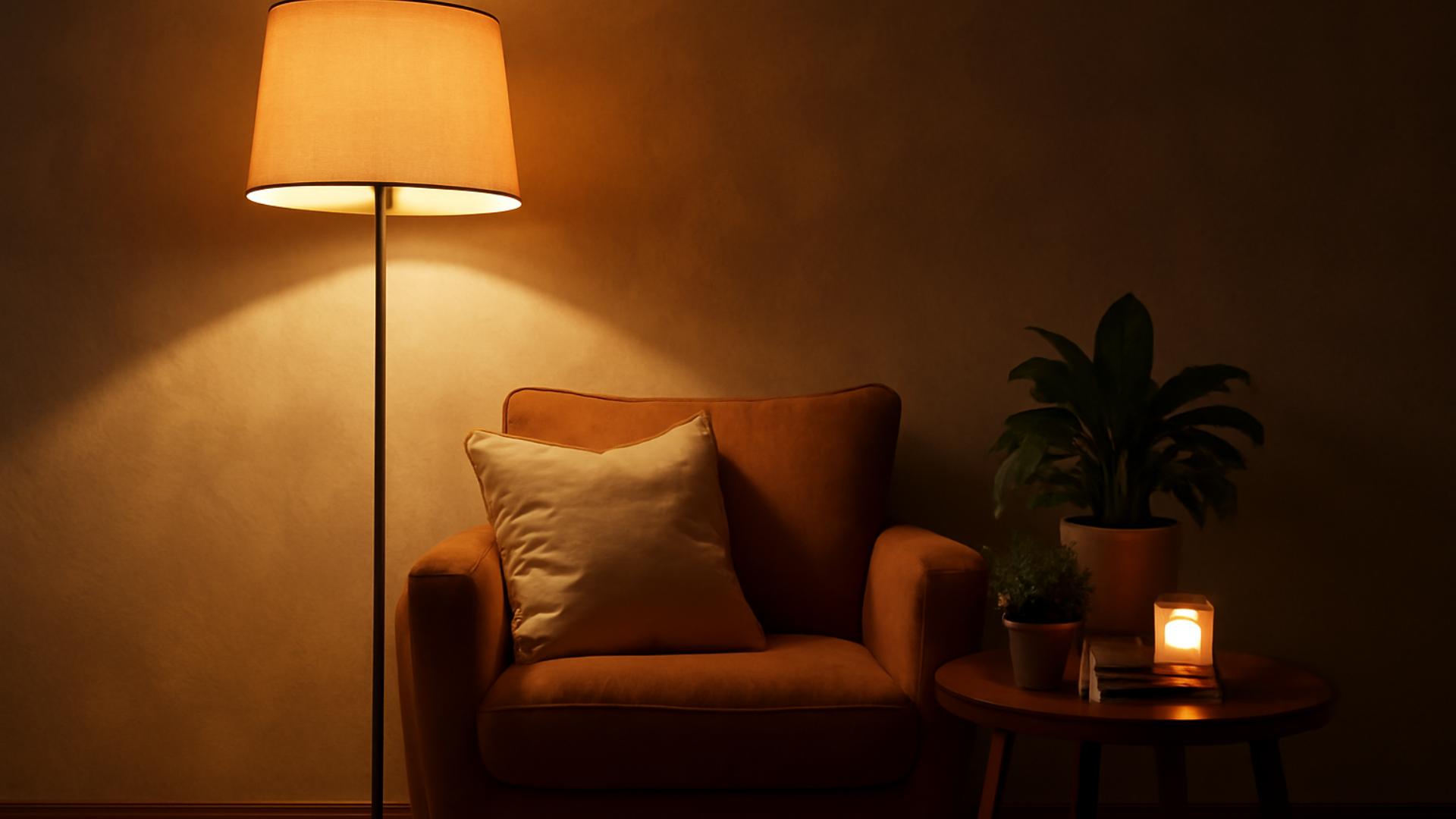In the ever-evolving world of interior design, the spotlight often shines on furniture, color palettes, and decor. Yet, there is an unsung hero that has the power to transform spaces profoundly—lighting. Whether we’re looking to create a cozy mood in our living room or a vibrant atmosphere in the office, the right choice of lighting can turn ordinary spaces into extraordinary experiences. Today, we’ll delve into the captivating realm of lighting and unravel how we can harness its potential to create the perfect ambiance in our environments.
When we think about lighting, it’s more than just flipping a switch. It’s about understanding how different types of lights evoke varied emotions and complement the design of our spaces. Join us as we explore the warmth of lamps, the charm of natural light, and the art of casting shadows to enhance our interiors. Let’s illuminate the path to better design.
Imagine walking into a room that instantly makes you feel at ease or stepping into an office that boosts your productivity. The secret ingredient? The clever application of lighting. By mastering the art of light, we can create environments that resonate with our emotions and needs.
The Art of Layered Lighting
Layered lighting is akin to composing a symphony; it’s about blending different light sources to achieve a harmonious balance. The principles behind layered lighting involve the strategic use of ambient, task, and accent lights to create depth and dimension in a room. Each type of light serves a unique purpose, and together, they create a cohesive experience that enhances the overall aesthetic.
Ambient lighting acts as the foundation, providing a blanket of illumination that ensures our spaces are well-lit. Think of overhead fixtures or floor lamps that fill the room with a warm glow, suitable for free movement and navigation. While ambient light sets the stage, it alone doesn’t suffice in a well-designed interior.
This is where task lighting steps in, focusing light precisely where we need it for activities such as reading or cooking. Table lamps and under-cabinet lights are prime examples of task lighting that facilitate productivity without overwhelming the senses.
Finally, accent lighting is the cherry on top, highlighting focal points and architectural features. Wall sconces and spotlights can be used to draw attention to art pieces or create shadows that add visual interest.
As we embrace the artistry of layering lights, we find ourselves sculpting the perfect mood for any occasion. With a thoughtful arrangement, our spaces become versatile, allowing us to transition seamlessly from day to night, work to relaxation.
Creating a Cozy Haven with Warm Lights
There’s something inherently magical about stepping into a space that envelops us in warmth and comfort. Warm lighting, with its inviting glow, can transform a chilly room into a cozy haven. As we explore the nuances of warm lighting, we uncover its power to evoke feelings of relaxation and intimacy.
The choice of light bulb plays a crucial role in achieving warmth. Opting for bulbs with a warm color temperature—around 2700K to 3000K—will help create an ambiance reminiscent of a gentle sunset or a flickering fireplace. We can enhance this effect by using lamps with dimmable features to adjust the intensity according to our desired mood.
Incorporating natural elements such as wooden lamp bases or fabric shades can amplify the cozy effect of warm lighting, adding an organic touch to the design. By combining these elements with strategically placed table lamps, we can create intimate corners perfect for unwinding after a long day.
Moreover, layering warm lighting with candles or string lights brings a touch of whimsy to our decor. The soft shadows cast by these lights create a sense of depth, making our rooms feel both spacious and inviting.
In our pursuit of comfort, warm lighting becomes more than a mere design choice; it’s a testament to the power of light in shaping our emotions and enhancing our well-being. As we envelop ourselves in its cozy embrace, we realize that warmth is a universal language that speaks to the heart. {image_content}
Harnessing Natural Light for a Vibrant Space
In our quest to create vibrant spaces, there’s no substitute for the power of natural light. Sunlight not only brightens up our interiors but also lifts our spirits and promotes well-being. By embracing the sun’s natural glow, we can transform our spaces into bright, airy havens that energize and inspire.
One effective way to maximize natural light is through design choices such as large windows and skylights, which create an open and free flow of light into our rooms. We can further enhance this effect by using light-colored walls and reflective surfaces, which bounce light around the room, reducing the need for artificial lighting during the day.
Strategically placed mirrors act as conduits, ushering light into darker corners and adding a sense of depth. Incorporating transparent or sheer window treatments allows us to maintain privacy while still inviting the sun’s rays.
For those of us with limited access to sunlight, it’s essential to mimic its effects through the thoughtful use of artificial lights that replicate the brightness and warmth of natural light. Consider full-spectrum bulbs that mimic daylight, offering a similar spectrum of color and intensity.
By harnessing the power of natural light, we create spaces that resonate with vitality and dynamism. It’s a reminder of the beauty that resides in simplicity and the way nature itself can guide our design choices. As we open our rooms to the sun, we also invite a sense of free-spirited openness and lightness into our lives.
The Power of Color in Lighting Design
Color is an essential element of lighting design that profoundly impacts our perception of space and mood. As we delve into the world of color, we discover how the interplay between light and color can transform our environments into vibrant expressions of emotion and style.
Colored lights offer an opportunity to inject personality into our spaces. From subtle hues to bold statements, the choice of color can evoke a wide range of emotions. For instance, blue tones are often associated with calmness and serenity, making them ideal for bedrooms and relaxation areas. Meanwhile, red or orange lights can bring warmth and excitement, perfect for social spaces.
The use of color doesn’t end with the lights themselves; it extends to how light interacts with our walls, furnishings, and décor. By choosing wall colors that complement or contrast with the lighting, we can create a visually stimulating environment. For instance, a soft gray wall paired with a warm, amber light creates a sophisticated and inviting ambiance.
Accent lighting is a powerful tool in color design, allowing us to highlight specific areas and introduce pops of color without overwhelming the senses. We can use colored LED strips or bulbs to outline architectural features or create themed settings for special occasions.
In the realm of lighting design, color becomes a medium of expression. By thoughtfully integrating it into our spaces, we gain the ability to craft atmospheres that reflect our unique taste and cater to our emotional needs. Through the lens of light and color, our rooms become living canvases, ever-changing and full of life.
Lighting, in its many facets, is a masterful art that allows us to shape moods and define spaces. It transcends mere functionality, becoming an integral part of our design journey. As we’ve journeyed through the realms of layered lighting, warm glows, natural light, and vibrant colors, we realize that lighting is not just about illumination—it’s about creating experiences.
The power of light lies in its ability to evoke emotions and foster connections. By weaving together the elements of light, color, and shadow, we can design spaces that reflect our personalities and cater to our desires.
As we continue to explore the world of lighting, let us remember that the true essence of design is found in the details. Lighting becomes our brush, and the spaces we inhabit are our canvas. Together, we can create environments that resonate with our hearts and inspire our lives.
FAQ
How can lighting impact the mood of a room?
Lighting plays a crucial role in setting the ambiance of a space. Soft, warm lights can create a cozy and inviting atmosphere, while bright, cool lights may make a space feel energetic and lively. Adjusting the brightness and color temperature can help tailor the mood to suit the desired atmosphere.
What types of lighting are best for creating a relaxing environment?
To achieve a relaxing environment, consider using soft, ambient lighting such as table lamps or wall sconces with warm bulbs. Dimmer switches can also be effective in adjusting the light intensity to a more soothing level, allowing for a calm and tranquil setting.
Is there a particular color temperature of light that enhances focus and productivity?
Yes, cooler light temperatures, typically between 4000K to 5000K, can stimulate alertness and are ideal for workspaces. These lights mimic daylight, which can enhance concentration and support productivity throughout the day.
What are some tips for using lighting to create a romantic atmosphere?
To craft a romantic ambiance, opt for low, warm lighting. Candlelight or string lights can add a touch of intimacy and charm. Strategically placing lights to highlight specific areas or features can also add a sense of mystery and allure.
Can the placement of lights affect the mood of a room?
Absolutely. The placement of lights can influence the perceived size and feel of a room. Uplighting can make ceilings appear higher, while downward lighting can create a more intimate setting. Layering different types of lighting at various levels can add depth and interest, enhancing the overall mood.



